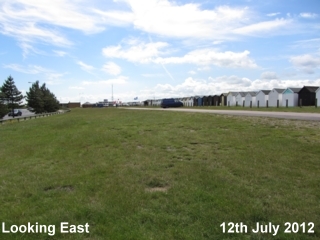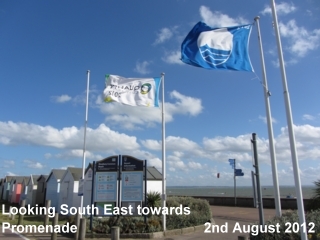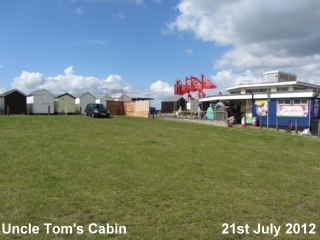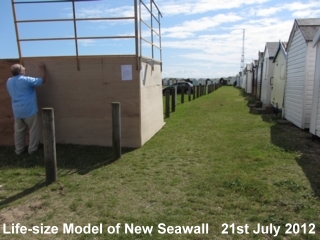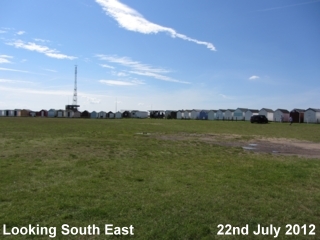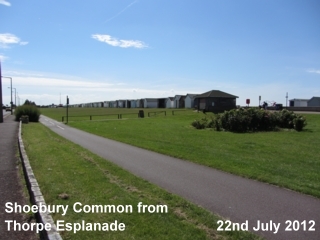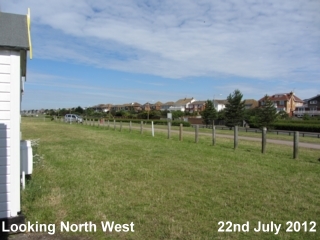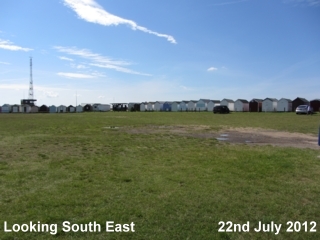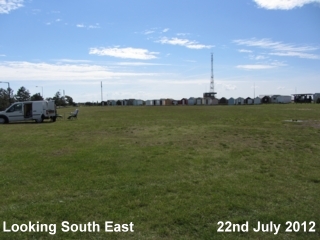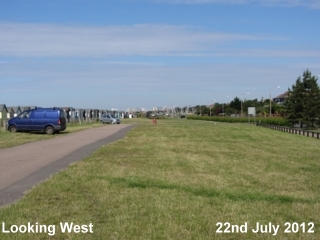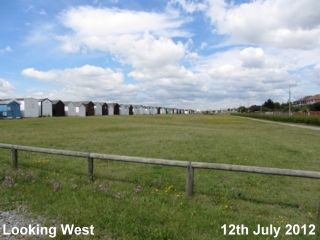

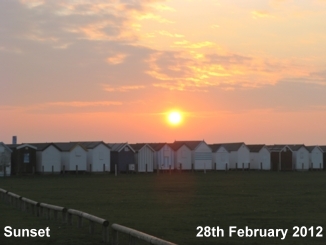
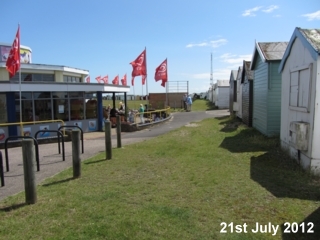
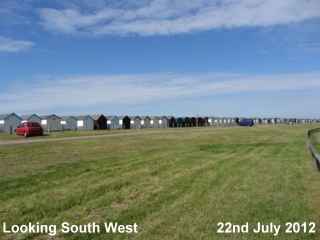

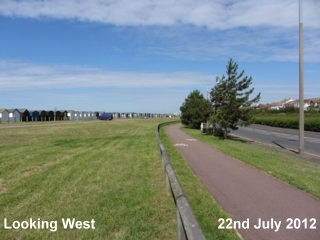

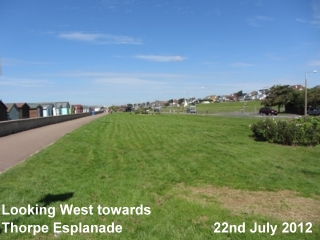

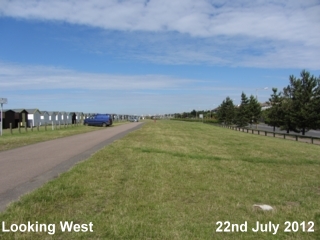
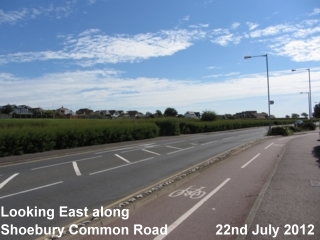
Is the Peace, Tranquillity and Beauty of Shoebury Common under Threat from the Council's Proposals? |
Raising the Promenade - Proposed by the Friends of Shoebury CommonIf the height of the wall within the Garrison grounds is the height to which the defences at Shoebury Common need to be raised, it seems to be in the region of only 60cm higher than the existing crest wall along Shoebury Common Promenade. Therefore if the whole promenade, wall and huts were raised to meet this level, it would be just 60cm higher that it is at present. The great advantage of this scheme is that once completed there would be no further maintenance necessary except that which is already involved in keeping the existing wall in good repair. There would be no floodgates involved, no security lighting and no CCTV cameras. There would be no negative impact on security; the area would still be open to view. There would be little or no change in the nature and character of the area. Additionally, the benefit of the existing floodplain would not be compromised. On the face of it, despite the initial cost of raising the whole area, it would appear to be less costly than the Council's preferred option with its 10 flood gates, one a vast 8 metres wide. To raise the huts, as a very rough estimate, I would have thought you could allow £5,000 for each hut. Figures on the Web show that a 3m x 3m log cabin can be bought for under £1,600. The cost of a concrete base is around £750 and installation a further £300. A new log cabin with base and installation would therefore cost less than £3,000 and I would have thought allowing £5,000 for each hut would be more than adequate. There are about 150 huts that would be involved. If not all the huts could be raised and new huts were needed to replace them, the total cost should certainly be no more than £750,000. The Council has an abundance of soil that could be utilised in raising the area. The access points from the promenade to the beach could be improved with new steps and concrete slopes for wheelchairs and prams. Perhaps even the need to step upwards to climb over the wall before stepping downwards to reach the beach could be eliminated. Removal baulks of timber could be incorporated into the design or even low self-closing floodbarriers at access points only. The level area of the promenade and that on which the huts stand could be extended back sufficiently to provide access for emergency vehicles and the disabled. Remembering the raised area is only 60cm higher than at present, this could then be gently slopped down, back across the Common to minimise disruption and maintain spaces available in the car park. However, in view of possible objections, all users of the Common, beach huts owners in particular, should be kept closely informed of the suggestion. All should be allowed to consider its merits and disadvantages, weighing up those alongside those of the Council’s preferred option, making constructive criticism and offering suggestions. Recharging Shoebury Common BeachThis schemes could be coupled with recharging Shoebury Common Beach to further improve the level of protection. The Council has admitted that the sandbank of the Mulberry Harbour is composed of fine grained sand which may possibly have eroded out of Jubilee Beach. Perhaps the sand of that sandbank could be added to the course material needed for recharge. Using the sand of the sandbank might also help reduce the amount of material that is no doubt washing into the shipping lanes. By raising the level of Shoebury Common Beach, at high tide the sea would no longer reach the wall. There would be less erosion on that wall and more places for people to sit. Use of Soil on East Beach FrontageThe soil held in temporary store on Gunners’ Park could be utilised to improve defences on the borough’s eastern coast where the risk of flooding from the North Sea is greater than that on the southern side from the River Thames. I think all will agree our most likely threat is from a North Sea Surge. An inundation, as the Council suggests, on such a mammoth scale to even reach the Asda Superstore, travelling along Ness Road, despite this road being uphill from its junction with Campfield Road, would first have hit our eastern shore at East Beach. Here it is not only property that is at risk but people’s lives. I refer of course to those, retired or semi-retired, living in the 48 or more, single storey Park Homes of East Beach Park. One must remember and take lesson from the 1953 floods where in Great Wakering, of the 6 who died from drowning or exposure, 5 were living in the 34 single-storey Nissan huts that stood on Wakering Common. During those floods, the part of Shoebury most affected was the area around Blackgate Road. Park Homes is accessible from Blackgate Road. Today, to the observer, this area still remains woefully unprotected. Undoubtedly, the most beneficial use of the soil would be to protect homes around East Beach, but if, however, these and other proposed schemes cannot go ahead, perhaps further consideration could be put to raising the whole promenade.
|
